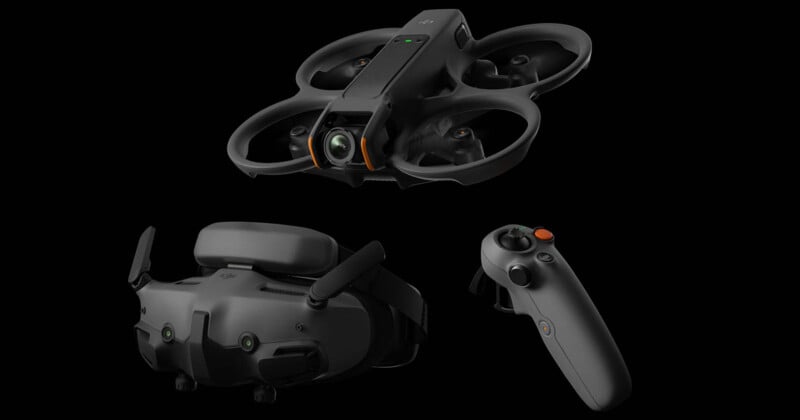DJI’s New Avata 2 FPV Drone Promises More Speed, Video Features, and Fun
![]()
Although many photographers look to DJI drones for capturing amazing aerial photos and videos, some users are primarily interested in the flying aspect of drones. The DJI Avata 2 may cater more to the flying enthusiasts, but like its very good predecessor, the Avata 2 can do it all.
The DJI Avata 2 is a compact, agile drone designed for first-person view flying using accompanying goggles. Compared to its predecessor, the original Avata, the Avata 2 has more style, speed, and stamina, all for a lower price than before. It also sports a larger image sensor than the original Avata, bringing the FPV drone series up to a Type 1/1.3-inch CMOS 12-megapixel image sensor that promises a wider dynamic range and improved performance in low-light conditions. The drone’s ultra-wide lens has a 155-degree field of view, like a 12mm lens on a full-frame camera.
The drone can record SDR and HDR video at up to 4K resolution and 60 frames per second or slow-motion video at 2.7K resolution and 100 fps. It also offers a 10-bit log video recording mode for drone pilots seeking more flexibility during post-processing and color grading.
The camera’s shutter speed ranges from 1/30s to 1/8000s for video and 1/50s to 1/8000s for photography. Its ISO is 100 to 25,600. The DJI Avata 2 only shoots JPEG still images though, no RAW files here.
As for battery life, the DJI Avata 2 can fly for 23 minutes, up from 19 minutes on its predecessor. Thanks to improved battery life and more speed — the Avata 2 can fly as fast as 60 miles per hour — the new drone has nearly two miles (three kilometers) more range than the original Avata.
The DJI Avata 2 has five more degrees of gimbal tilt, a more aerodynamic design, 46GB of built-in storage, and supports video live-streaming at up to 30 MB/s bitrates.

Other practical improvements include the new accompanying DJI Goggles 3, which delivers first-person flying. Compared to older DJI Goggles, the new ones now feature a built-in battery and GPS. The headset has dual 1080p OLED displays, defogging functionality, improved video transmission performance, more stable video, and outward-facing cameras for pass-through video.
A new DJI RC Motion 3 controller uses buttons, a joystick, and motion control to pilot the Avata 2. It has a two-stage trigger for throttle control, pre-programmed roll and flip buttons, and a recording button.
By the way, the new Googles 3 and RC Motion 3 controllers are also compatible with some existing DJI drones, including the DJI Air 3 and Mini 4 Pro.
The DJI Avata 2 is available now. The drone itself is available a la carte for $489.
There is also the $999 DJI Avata 2 Fly More Combo, which includes the drone, the new controller, and the improved goggles. For even more flying fun, the three-battery combo is $1,200 and offers all these same items plus another two batteries. (LINKS)
Image credits: DJI